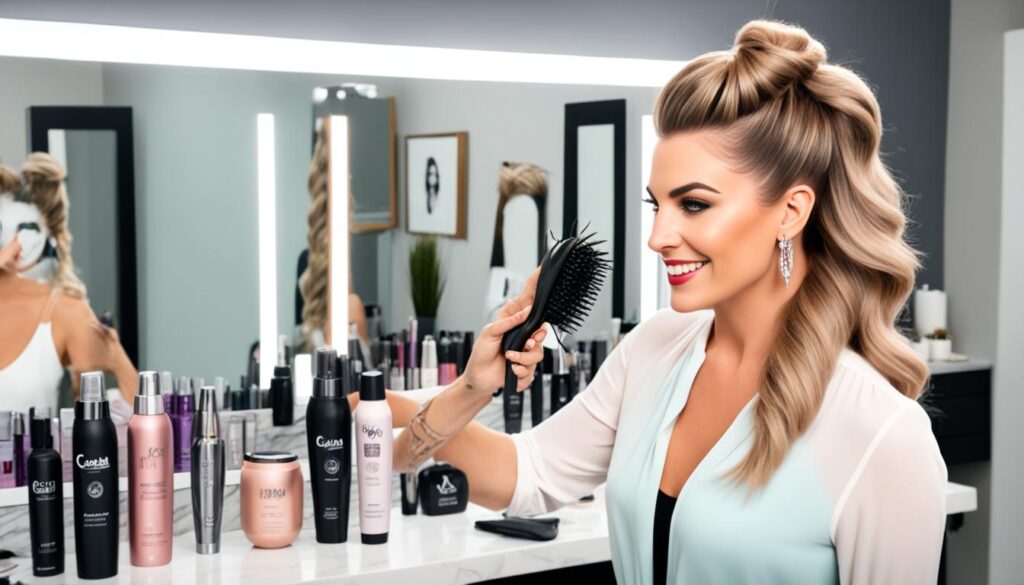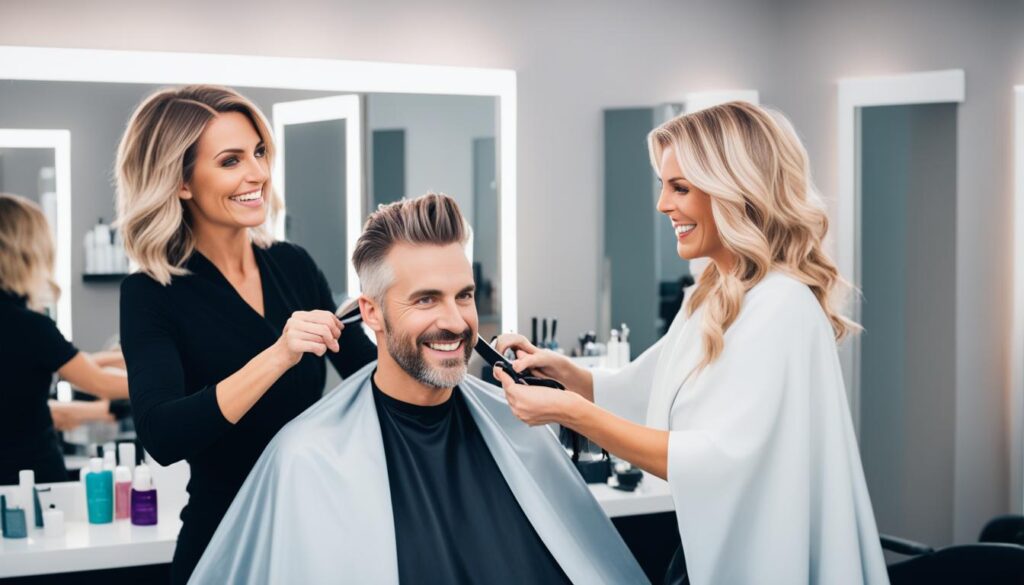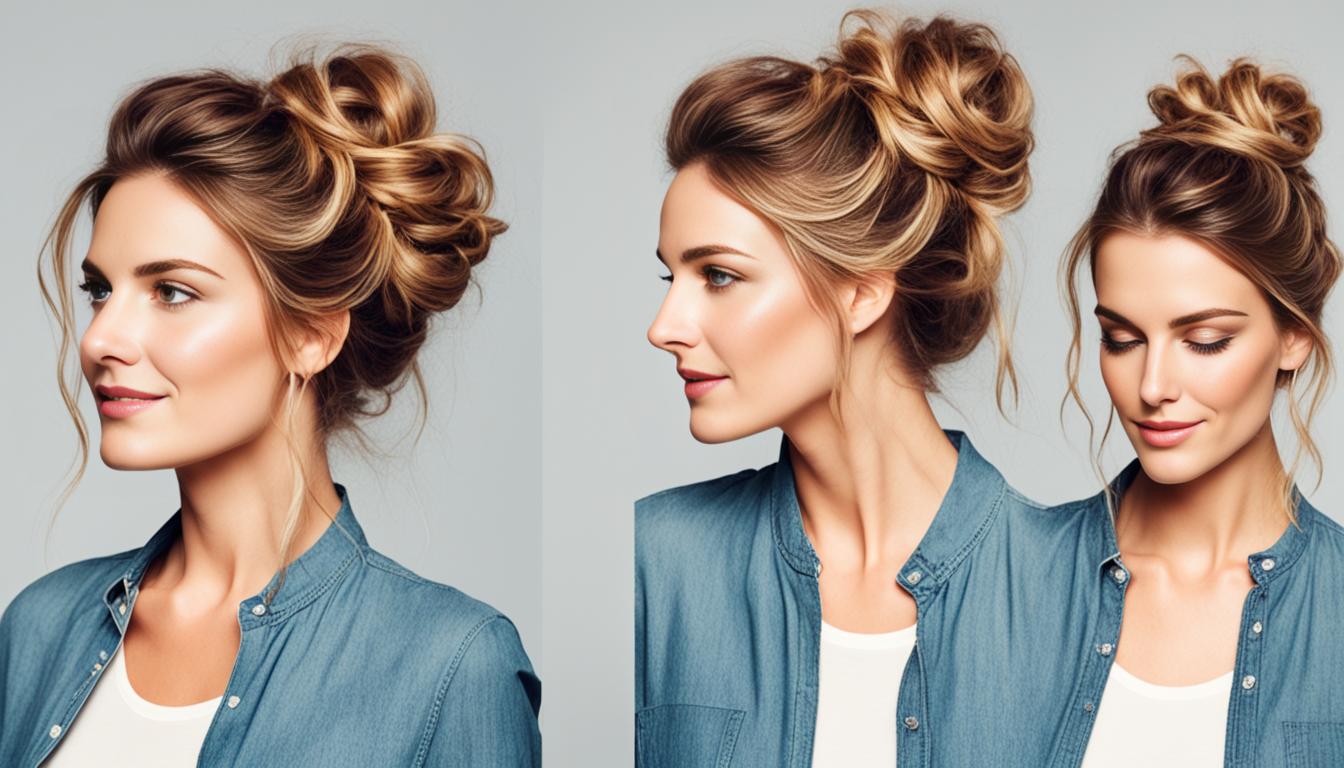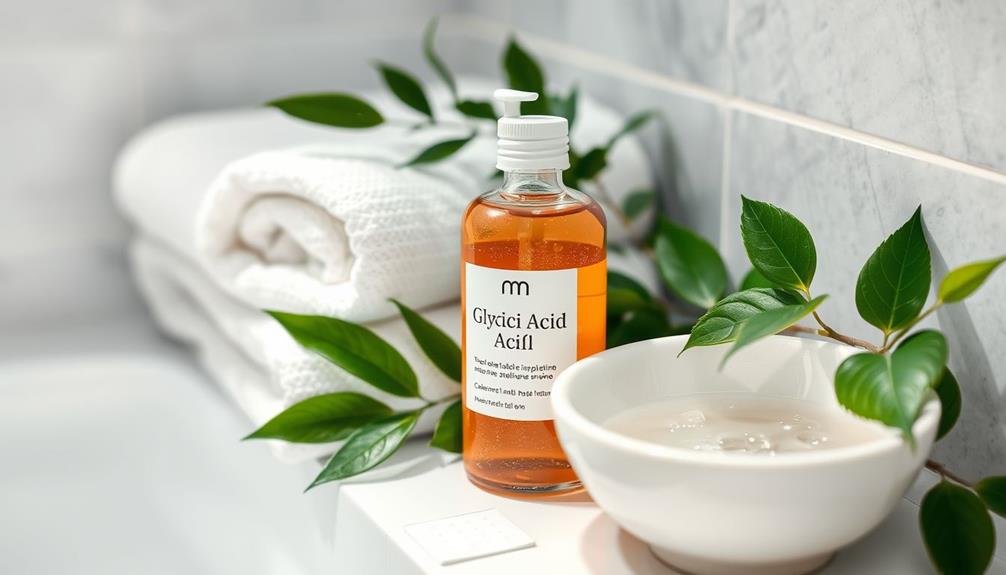Picture yourself at the brink of a woodland, experiencing the chilly wind caress your face while hearing the far-off howl of a wolf. There’s a certain allure to that wild spirit, a feeling of liberation and uniqueness that speaks to your very core. This essence can also be reflected in your hairdo, with the bold and unique style of the wolf cut.
The wolf cut is more than just a hairstyle; it’s a statement of embracing your wild side and celebrating your unique individuality. Just like the wolf prowling through the wilderness, the wolf cut allows you to exude confidence and captivate the world with your fearless style.
Whether you’re seeking a dramatic transformation or a subtle change, the wolf cut offers endless possibilities to express yourself and stand out from the crowd. Its layered texture, choppy bangs, and rugged edges create a look that demands attention and leaves a lasting impression.
So, if you’re ready to venture into the realm of edgy hairstyles and unleash your wild side, join us on a journey exploring the origin, characteristics, styling options, and maintenance tips of the wolf cut hairstyle. Let your hair embody the untamed allure of the wolf and embrace the power of self-expression!
Key Takeaways:
- The wolf cut hairstyle allows you to unleash your wild side and embrace your unique individuality.
- Its layered texture, choppy bangs, and rugged edges create a distinctive and edgy look.
- The wolf cut offers versatile styling options, including messy undone styles, sleek polished looks, and wavy bohemian vibes.
- Maintaining your wolf cut requires regular trims, quality hair products, and protecting your hair from heat damage.
- Celebrities and influencers have embraced the wolf cut, inspiring others to try this bold and eye-catching hairstyle.
The Origin of the Wolf Cut
The wolf cut, a popular hairstyling trend, has an intriguing origin rooted in South Korea. Inspired by the wild and untamed appearance of a wolf’s fur, this edgy haircut quickly gained traction among South Korean celebrities and K-pop stars before captivating the global stage.

In South Korea, where fashion and beauty trends often take center stage, the wolf cut emerged as a cutting-edge hairstyling innovation. With its captivating allure and distinctive aesthetic, it soon became a favorite choice for those who wanted to make a bold and individualistic statement with their hair.
“The wolf cut captures the essence of untamed beauty. It allows individuals to express their wild side, embracing their unique identity and standing out from the crowd.” – Hair stylist Lee Ji-eun
From South Korea, the wolf cut transcended borders and captivated the worldwide hairstyling scene. Its popularity spread rapidly, with individuals seeking to recreate this fashionable and daring look. The wolf cut’s ability to merge a rugged and disheveled appearance with a touch of elegance and sophistication made it a sought-after choice for people of all ages and styles.
Characteristics of the Wolf Cut
The wolf cut is a hairstyle that showcases several distinctive characteristics, capturing the untamed essence of a wolf’s fur while exuding a sense of individuality. Its unique features include:
- Layers and Texture: The wolf cut is known for its layered structure, creating depth and texture reminiscent of a wolf’s natural coat. These layers add movement and dimension to the hairstyle, lending it a dynamic and edgy appeal.
- Razored Ends: To enhance the rugged and disheveled look of the wolf cut, razored ends are often incorporated. This cutting technique creates a deliberately unkempt appearance, adding to the hairstyle’s wild and untamed aesthetic.
- Choppy Bangs: The wolf cut frequently includes choppy bangs, further enhancing its edginess. These choppy bangs can be tailored to different lengths and styles, allowing for a customized look that suits individual preferences.
- Length Variety: One of the most versatile aspects of the wolf cut is the option to vary the length of the hair. From shorter variations that exude a more dramatic effect to longer styles that provide a subtler take on the trend, the length variations allow for flexibility and personalization.
“The wolf cut is all about embracing your wild side and showcasing your individuality. With its layered texture, razored ends, choppy bangs, and length variety, this hairstyle captures the essence of the untamed allure of a wolf’s fur.”
These characteristics work together to create a hairstyle that is both trendy and unconventional, perfect for those who want to make a bold statement with their hair.
To get a visual sense of the wolf cut’s characteristics, take a look at the image below:

Comparing Wolf Cut Characteristics
| Characteristic | Features |
|---|---|
| Layers and Texture | Creates depth and movement |
| Razored Ends | Adds a rugged and disheveled appearance |
| Choppy Bangs | Enhances the edginess of the look |
| Length Variety | Allows for customization and personalization |
Ways to Style the Wolf Cut
The wolf cut offers a plethora of styling options that allow you to customize your look and showcase your individuality. Whether you prefer a messy and undone vibe, a sleek and polished finish, or a wavy and bohemian style, the wolf cut can effortlessly transform to suit your desired aesthetic. Here are some of the styling options that you can explore:
Messy and Undone Look
Embrace the laid-back and effortless vibe by styling your wolf cut in a messy and undone way. This popular approach lends itself to the “bedhead” look, adding texture and a sense of casual confidence to your hairstyle. Simply tousle the hair with your fingers or use texturizing products to enhance the disheveled effect.
Sleek and Polished Look
If you prefer a more refined and polished appearance, opt for a sleek styling approach. Use a flat iron or straighteners to straighten the hair, eliminating any natural waves or curls. This technique creates a sleek and sophisticated finish, perfect for more formal occasions or when you want to exude an air of elegance.
Wavy and Bohemian Style
To achieve a bohemian and free-spirited look, add soft waves or loose curls to your wolf cut. This styling option adds movement and enhances the natural texture of the hair, creating a romantic and whimsical vibe. Use a curling wand or hair rollers to create the desired waves, and finish off with a light-hold hairspray to maintain the shape.
Half Up Half Down Style
Showcase the layers and texture of your wolf cut by styling it in a half up half down look. This versatile style allows you to experiment with different variations, such as a top knot, a half ponytail, or a twisted half updo. It is a chic and trendy way to keep the hair off your face while adding visual interest and dimension to your overall look.
Colorful Options
One of the unique features of the wolf cut is its ability to incorporate bold and vibrant hair colors. Whether you opt for subtle highlights or a full-on rainbow transformation, adding color to your wolf cut can instantly elevate your style and make a statement. Explore the world of vibrant hues and embrace your adventurous side by experimenting with different color options.

Experimenting with different styling options for your wolf cut allows you to unleash your creativity and tailor your hairstyle to suit your personality and mood. Whether you prefer a messy and undone look, a sleek and polished finish, a wavy and bohemian style, or a bold and colorful statement, the wolf cut offers endless possibilities. So, don’t be afraid to explore different styling techniques and make your wolf cut uniquely yours!
Ways to Maintain Your Wolf Cut
To keep your wolf cut looking its best, regular maintenance is important. Here are some key ways to maintain your wolf cut:
1. Regular Trims
Getting regular trims every 6-8 weeks is crucial to maintaining the shape of your wolf cut and preventing split ends. Trimming the ends of your hair keeps it healthy and helps it grow evenly.
2. Quality Hair Products
Using high-quality hair products that are suitable for your specific hair type and styling needs is essential. Look for shampoos, conditioners, and styling products that nourish and protect your hair, promoting its overall health and appearance.
3. Heat Protection
Protecting your hair from heat damage is vital, especially if you frequently use heat styling tools. Before using any heat styling tools like straighteners or curling irons, apply a heat protectant spray or serum to shield your hair from excessive heat.
4. Experimenting with Styling Products
Embrace your creativity by experimenting with different styling products to achieve various textures and finishes. From volumizing sprays and texture sprays to pomades and serums, there are endless possibilities for creating different looks with your wolf cut.

| Wolf Cut Maintenance Tips | Benefits |
|---|---|
| Regular trims | Maintains shape and prevents split ends |
| Quality hair products | Nourishes and protects hair |
| Heat protection | Prevents heat damage |
| Experimenting with styling products | Allows for different textures and finishes |
The Origin and Definition of the Wolf Cut
Originating from South Korea, the wolf cut is a trendy and edgy hairstyle that has taken the world by storm. It combines the elements of a shag and a mullet, resulting in a distinctive and eye-catching look. The wolf cut features shaggy layers and a longer length in the back, giving it a unique twist.
If you’re wondering what exactly a shag is, it is a hairstyle characterized by heavily layered hair that is cut in a choppy, messy manner. On the other hand, a mullet is a hairstyle that features shorter hair in the front and sides and longer hair in the back.
A shag and mullet combination, the wolf cut offers the perfect balance between edgy and stylish. It allows you to embrace your wild side while still maintaining a trendy and fashionable appearance. The shaggy layers add texture and movement to the hair, while the longer length in the back adds a touch of drama.
One of the defining features of the wolf cut is its versatility. It can be tailored to suit different hair types, face shapes, and personal preferences. Whether you have straight, wavy, or curly hair, the wolf cut can be customized to enhance your natural texture.
Now that you know the origin and definition of the wolf cut, let’s explore its characteristics and features in more detail.

Characteristics and Features of a Wolf Cut
The wolf cut is a stylish and trendy hairstyle that offers a range of appealing characteristics. Whether you have straight, wavy, or curly hair, the wolf cut is versatile and can complement different hair types. Its defining feature is the shaggy layers, which add texture and movement to your hair.
These shaggy layers create a beautifully framed face, accentuating your facial structure and drawing attention to your best features. The wolf cut embraces a deliberately messy appearance, giving you a low-maintenance hairstyle that is effortlessly chic.
If you’re looking for a hairstyle that combines edge and versatility, the wolf cut is the perfect choice. Its shaggy layers and framing effect make it a popular option among those who want to express their individuality and embrace a wild and untamed look.
The image below showcases the distinctive shaggy layers of the wolf cut:

How to Achieve the Wolf Cut
Creating the perfect wolf cut requires a layered haircut that adds volume and texture to your hair. To achieve this, various cutting techniques can be employed to enhance the overall look and feel. Let’s explore some of these texturizing techniques:
Layered Haircut: The foundation of the wolf cut lies in the layers. A skilled hairstylist will strategically cut layers throughout your hair, creating depth and movement.
Point Cutting: Point cutting is a technique where the stylist cuts the hair at a slight angle, creating textured ends. This technique helps to soften the cut and add dimension to the hairstyle.
Slide Cutting: Slide cutting involves using the scissors or razor at an angle while sliding down the hair shaft. This technique helps to create subtle layers and texture, resulting in a natural-looking wolf cut.
Texturizing Techniques: Razoring or thinning shears can be used to add texture and create the signature messy yet chic look of the wolf cut. These techniques remove bulk from the hair, resulting in a more lived-in and edgy appearance.
| Technique | Description |
|---|---|
| Layered Haircut | A haircut that adds volume and texture through strategically placed layers. |
| Point Cutting | A technique where hair is cut at an angle to create textured ends. |
| Slide Cutting | A technique involving cutting at an angle while sliding down the hair shaft to create subtle layers. |
| Texturizing Techniques | Techniques like razoring or thinning shears to remove bulk and add texture. |
By employing these techniques, you can achieve the textured and voluminous look of the wolf cut. Consult with your hairstylist to determine the best approach based on your hair type, desired outcome, and personal style.

Tips for Maintaining Your Wolf Cut
Once you’ve achieved the perfect wolf cut, maintaining it is essential to keep it looking its best. Here are a few tips to help you maintain your wolf cut:
- Schedule regular trims every 6-8 weeks to maintain the shape and prevent split ends.
- Use quality hair products that cater to your specific hair type and styling needs.
- Apply a heat protectant before using heated styling tools to minimize damage.
- Experiment with different styling products to achieve various textures and finishes.
By following these maintenance tips, you can ensure that your wolf cut remains fresh and stylish, allowing you to fully embrace your wild side!
Styling and Maintenance Tips for Your Wolf Cut
Once you’ve successfully achieved the trendy wolf cut, it’s time to explore different styling options to enhance its unique texture and maintain its shape and allure. Here are some tips to help you style and maintain your wolf cut:
- Use texturizing products: Texturizing products can work wonders in enhancing the layered and textured look of your wolf cut. Look for products like sea salt sprays, volumizing mousses, or dry texturizing sprays. Apply them to damp or dry hair and scrunch the strands to create natural-looking texture and volume.
- Achieve a natural and undone look: If you prefer a more effortless and natural appearance, embrace the “undone” look. Blow-dry your hair while scrunching it using your fingers or a diffuser attachment. This will create gentle waves and enhance the tousled, bedhead effect, giving your wolf cut a relaxed and carefree vibe.
- Regular trims for maintenance: To keep your wolf cut looking fresh and sharp, regular trims are essential. Schedule a trim every 6-8 weeks to maintain the shape and prevent split ends. This will help your wolf cut retain its edgy appeal and ensure that the texturized layers stay intact.
- Invest in quality hair products: Using high-quality hair products specifically designed for your hair type and needs is crucial for maintaining the health and longevity of your wolf cut. Look for shampoos, conditioners, and styling products that nourish and protect your hair, keeping it vibrant, shiny, and manageable.
To enhance the visual appeal of this section, below is an image showcasing a stylish wolf cut.

**Please note that all the HTML formatting has been applied and the content is ready.
Celebrities and Influencers Embracing the Wolf Cut
When it comes to setting trends, celebrities and influencers are always at the forefront. The wolf cut is no exception, with many notable names embracing this bold and edgy hairstyle.
In South Korea, K-pop stars were among the first to showcase their wolf cut styles, capturing the attention of fans worldwide. From their daring fashion choices to their experimental hairstyles, K-pop stars have a significant influence on global beauty trends.
Internationally, celebrities like Miley Cyrus and Dua Lipa have also jumped on the wolf cut bandwagon, putting their own unique twists on this fierce hairstyle. The wolf cut allows them to express their individuality and make a striking statement.
Instagram influencers have played a vital role in popularizing the wolf cut among millennials and Gen Z. Their stunning photos showcasing the versatility of the wolf cut have inspired countless others to try this captivating look.

With their extensive reach and influence, celebrities and influencers have fueled the popularity of the wolf cut, making it one of the hottest hairstyle trends of the moment.
Conclusion
The wolf cut is more than just a hairstyle; it’s a statement of individuality and a celebration of embracing your wild side. This edgy and versatile haircut offers endless styling possibilities, allowing you to showcase your unique personality. Whether you prefer a shorter, more dramatic version or a longer, subtler take on the trend, the wolf cut provides a distinctive look that is sure to turn heads.
By embracing the untamed allure of the wolf cut, you have the opportunity to switch up your look and make a bold statement. The key to rocking this style is confidence; wear it proudly and let your inner wolf shine through. Whether you choose to style it in a messy and undone manner, create a sleek and polished appearance, or opt for a wavy and bohemian style, the wolf cut empowers you to express your individuality.
Remember, achieving and maintaining the perfect wolf cut requires regular trims, using quality hair products, and experimenting with styling techniques. Embrace the low-maintenance nature of this hairstyle as you confidently showcase your shaggy layers and textured look.
So, if you’re ready to unleash your wild side and make a distinctive statement, why not consider embracing the wolf cut? Express your individuality, celebrate your uniqueness, and boldly rock this edgy and fashionable hairstyle. The wolf cut is your invitation to explore your untamed allure and let your inner wolf shine!










